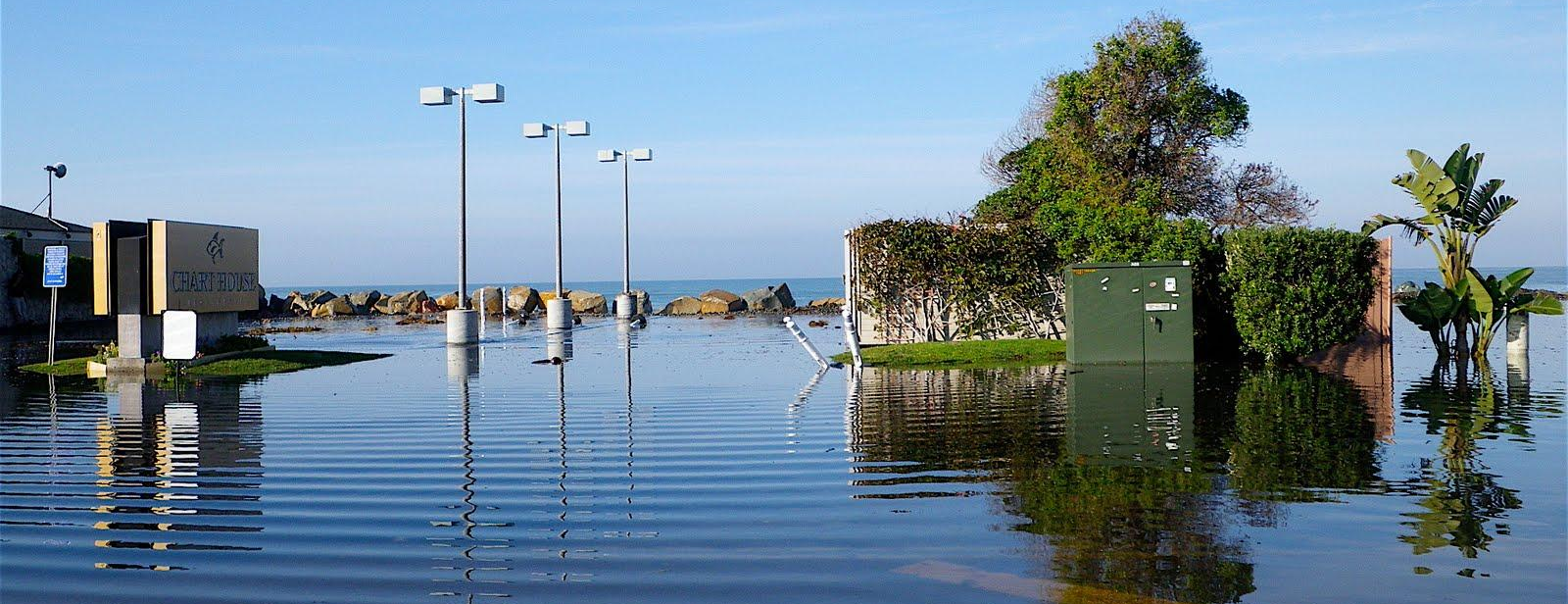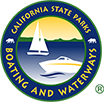
Regional Sediment Management (RSM) is a relatively recent concept that has gained traction in California and elsewhere. There is a lot of information relating to RSM, however this information is often difficult to find since it was not developed specifically for sediment management concerns.
CSMW held a series of technical workshops in 2003 to gain input from local, regional, state and federal sediment managers as to the types of problems that could be tackled during development of their Sediment Master Plan (SMP). Regulators, reviewers, planners, project proponents and CSMW members all agreed that it would be very useful if the SMP process could assemble technical information related to beach nourishment and RSM and make that information easily available. Stakeholder concerns were grouped into seven broad categories for research and analysis.
CSMW accordingly conducted a review of relevant documentsand prepared a Literature Search report summarizing the study findings, along with the references used to analyze the 7 broad topics. The Literature Search Report was completed in 2004. Links identified below access topical sections within that report. Discussions summarizing the references topical content were a main objective of the report.
Starting in 2008, CSMW began entering these references along with those compiled during preparation of various CSMW informational reports and tools into their Coastal Sediment References Searchable Database. All references subsequently compiled during CSMWs Coastal RSM Plan program were also incorporated into the searchable database.
Jump to the section:
- BEACH NOURISHMENT PROJECTS
- COASTAL EROSION & BEACH NOURISHMENT NEEDS
- COARSE TO FINES - "RULE OF THUMB"
- DEBRIS BASINS
- OFFSHORE SEDIMENTS SOURCES
- NATURAL & ANTHROPROGENIC TURBIDITY PLUMES
- SEASONAL SAND MOVEMENT
Beach Nourishment Projects
Known and available information related to beach nourishment in California was compiled and assessed. The categories of data include: types and grain size distribution of sands used for nourishment projects; observed end results of nourishment projects, and; the basis for limitations placed on the percentage of allowable finer grained materials in nourishment projects. A spatial dataset of historic locations was compiled and included in CSMWs geospatial database.
Coastal Erosion & Beach Nourishment Needs
Available and known beach nourishment needs were identified along the entire California coast (locations, reasons, severity of need, and consequences). Critical beaches that would benefit most from beach nourishment and known erosion hot spots were tabulated. This information was updated through the California Beach Erosion Assessment Survey 2010. Locations of Beach Erosion Concern Areas (BECAs) classified in that survey were incorporated into CSMWs geospatial database.
Coarse to Fines - "Rule of Thumb"
This section identified studies assessing the coarse-to-fines ratio of 80/20, used by various regulatory agencies as a “rule of thumb” to determine whether potential source sands are appropriate for use on a given beach. The study identified the origin of the rule-of-thumb and nourishment projects where variances from the rule-of-thumb were allowed, including the basis for such variance(s).
Sediment containing 80% sands and 20% fines (i.e 80/20) historically has been considered to contain the maximum amount of fine-grained materials suitable for use in a beach nourishment project by the USEPA and other agencies that follow the USEPA lead. Use of source materials containing a higher percentage of fines has typically been discouraged unless a high degree of background information on sediment movement patterns and potential impacts on ecological habitats in the vicinity of the project is available. The 80/20 ratio is a "rule of thumb" as opposed to an actual regulation, and we have identified and provided known information on this rule of thumb in the links below.
The 80/20 rule of thumb was originally developed as guidance for when regulatory rules applicable to ocean dumping become relevant and morphed into assessments as to whether placing sediment on a beach was considered ‘dumping’ or ‘nourishment’. Also important was the conclusion that sediment with greater that 20% fines had the potential to, due to adsorption capabilities of the fines, contain hazardous chemicals.
This topic was an integral part of CSMWs Sand Compatibility and Opportunistic Use Program, (SCOUP) which included a process vetted by regulatory agencies on how ‘Less Than Optimum’ (i.e., greater than 20% fines) sediment could be used for beach nourishment projects. In addition, CSMW initiated, partially funded and participated in a multi-agency demonstration project to evaluate the impacts associated with using high percentage fines sediments for beach nourishment at the Tijuana Estuary.
Debris Basins
This section compiled known information on debris basin locations, contacts, volumes, and cleanout frequencies. Efforts were focused outside of Ventura and LA Counties, since debris basins in those counties were already identified on shapefiles within the geospatial database. Findings of this study were subsequently used to update those geospatial layers.
Offshore Sediments Sources
This section compiled available information regarding the presence of fine-grained "mud belts", potential sand source areas, sandy and rocky bottom habitats in the offshore vicinity of potential beach nourishment locations.
- Offshore Sand Deposits, Southern California - tabulates selected sites of offshore sand deposits from Santa Barbara - San Diego counties
- Offshore Potential Sediment Sources - discusses known information regarding the distribution of sediment types on the seafloor along the coast and provides related references
Natural & Anthroprogenic Turbidity Plumes
This section analyzed studies that investigate: the transport and depositional fate of fine-grained materials associated with natural and anthropogenic turbidity plumes; what's currently known about the densities and duration of "natural" turbidity plumes, and; similar information on plumes associated with beach nourishment or other sediment management activities. This information has been updated through CSMWs report "Sources, Dispersal and Fate of Fine Sediment Supplied to the California Coast", released in 2007.
Seasonal Sand Movement
This section intended to document known information (i.e., case studies, etc.) regarding the natural seasonal movement of sand from the beach to nearshore and back. This information has been updated by CSMW reports "Development of Sand Budget for California's Major Littoral Cells" (2007) and "Littoral Cells, Sand Budgets and Beaches" (2006).
Littoral Cell, Sand Budgets and Beaches
People have been interested in beaches and coastal processes for many years. It has been observed that beach width can change significantly over a range of time periods, from hours and days to years and decades. Long-term erosion/narrowing of California’s beaches is of great concern to coastal managers as well as the general public, since habitat, recreational opportunities and shore protection are adversely affected by such loss.
The coastline of California can be separated into distinct, essentially self-contained regions or cells that are geographically limited. For example, beach sand in the Santa Barbara area originates from the watersheds and the coastline in the Santa Barbara area, while beach sand in San Diego or Santa Cruz comes from within those geographic areas.
Coastal geologists and engineers call these self-contained coastal units “littoral cells”. These cells are geographically limited and consist of a series of sand sources (such as rivers, streams and eroding coastal bluffs) that provide sand to the shoreline; sand sinks (such as coastal dunes and submarine canyons) where sand is lost from the shoreline; and longshore transport or littoral drift that moves sand along the shoreline. Understanding this setting allows researchers to focus on the major elements influencing specific beach or shoreline areas. This report illustrates how sand moves from one location to another within littoral cells.
It is the balance between the volumes of sand entering and leaving a littoral cell over the long-term that govern the long-term width of the beaches within the cell. Scientists use the concept of sand budgets to identify and quantify, to the degree possible, additions and losses of sand that influence beach width. Where sand supplies have been reduced through the construction of dams or debris basins in coastal watersheds, through armoring of the seacliffs, by mining sand or restricting littoral transport through large coastal engineering structures, the beaches may temporarily or permanently narrow. Sand budgets are illustrated and then summarized for California’s major littoral cells.
Beach nourishment or beach restoration is the placement of sand on the shoreline with the intent of widening a beach that is naturally narrow or where the natural supply of sand has been significantly reduced through human activities. Nourished shorelines provide a number of benefits including increased area for recreation, increased revenue from tourism, habitat improvement for shore dependant species, greater protection of the coastline from coastal storms, reduced need for armor, and increased public access. While nourishment may appear to be an attractive alternative to coastal armoring or retreat, this report describes a number of issues or considerations that need to be carefully considered and addressed. Sand retention systems have been used effectively at a number of sites in California as a way to significantly extend the lifespan of a beach nourishment project.
The CSMW and the University of California at Santa Cruz, have developed this report as an educational tool as part of their public outreach effort associated with the Sediment Master Plan. A more detailed report on specific sand budgets for California’s major littoral cells is a complement to, and resource for this more general discussion. The document was prepared with significant input from CSMW personnel, but does not necessarily represent the official position of member agencies.
